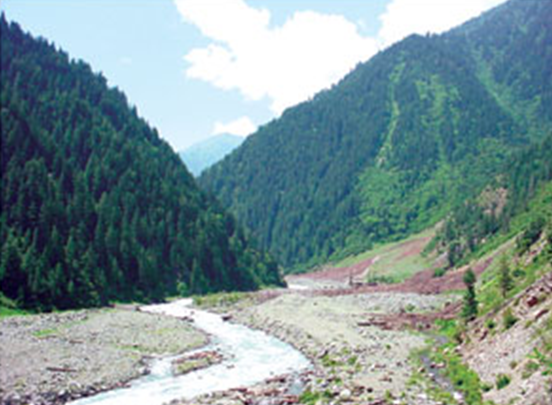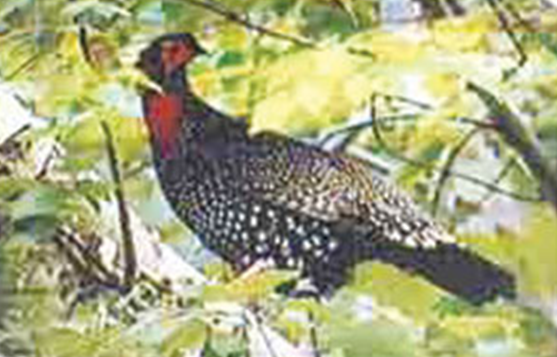Palas Valley
This is a collection of articles archived for the excellence of their content. Readers will be able to edit existing articles and post new articles directly |
Palas Valley
An ecological treasure
The Palas Valley has both faunal and floral diversity having more than 140 bird species including seven of the eight restricted range west Himalayan species, with the largest known population of the globally threatened western tragopan, writes Mohammad Niaz
The remote and far-flung areas in Pakistan seldom come in the spotlight by virtue of their inaccessibility. The Palas Valley is one such remote area located on the left bank of the River Indus, being its sub watershed in district Kohistan, NWFP, and covers about an area of 1,300 kilometres. The entire tract is a complex maze of rugged and lofty mountains with varying elevations from 600 to 5151 metres. The climate of the tract is both dry sub-tropical and temperate.
Palas Valley is an ecological treasure trove and is a hot spot for the conservation of biodiversity. Its great altitudinal and climatic range provides a good source of water which comes from the seasonal snow. Its forests have not only regional but also global ecological significance. There are extensive alpine rangelands with prospects of promoting eco-tourism along with providing grazing grounds for livestock.
The valley has both faunal and floral diversity having more than 140 bird species including seven of the eight restricted range west Himalayan species with the largest known population of the globally threatened western tragopan.
The valley is also home to several other mammals such as the grey langur, black bear, wolf, snow leopard, common leopard, musk deer, and rhesus monkey, to mention a few.
In the thick cover of the Palas forests and plains there is rich biodiversity in the form of reptiles, amphibians and invertebrates. According to the IUCN, the western Himalayas has high floral endemism with outstanding botanical importance; the total number of plant species probably exceeds 600 in Palas. It contains the largest known population of the threatened west Himalayan elm Ulmus wallichiana.
The Palas forests provide not only tangible but also intangible benefits to the people from the local resources and environment with scenic and subsistence value. They protect soil erosion, landslides, river siltation and flooding. Thus they are economically and environmentally beneficial to the area.
The forests also provide a lot of non-timber products including wild fruits and vegetables, honey, fuel wood, plants, and fodder to the people and their livestock. Torch wood extraction is common near habitations due to the presence of conifers like pine and deodar trees.
In order to protect the ecological richness of the valley with active participation of the local communities, a project called Palas Conservation and Development Project (PCDP) was implemented from 1998 to 2004 with financial assistance from the foreign donors and the government of Pakistan. Earlier, a project called the Himalayan Jungle Project (HJP) was implemented that was later taken up by PCDP, which also focused on the protection of the worlds largest population of the western tragopan pheasant and its habitat.
The Palas Conservation and Development Project works with an objective to protect and conserve biodiversity and has gained considerable achievement in terms of the uplift of both natural resources and the local communities.
The western tragopan, being the flagship species of the area, is one of five species in its genus and is confined to relatively undisturbed areas of the west Himalayan temperate forest in the north of Pakistan and north-western India, through the Himalayas to eastern China.
The importance of the entire tract can be realised from the fact that the United Nations Education and Scientific Committee (Unesco) is considering declaring it Man and Biosphere Reserve.



